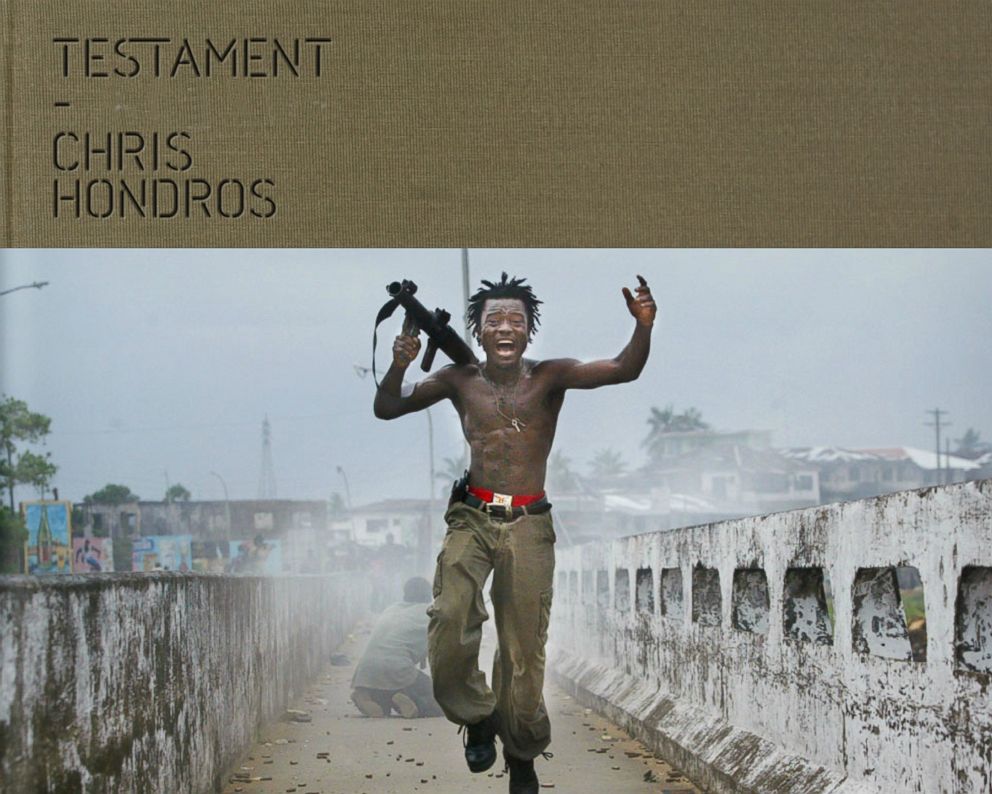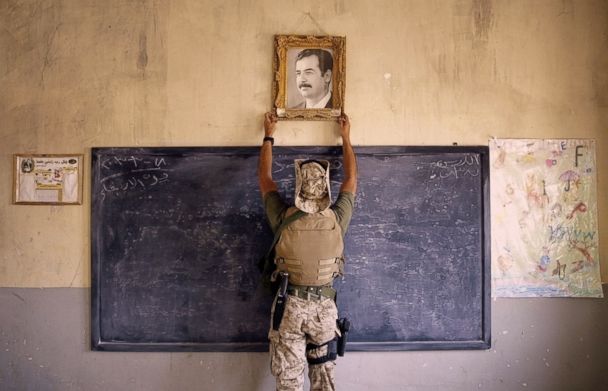Slain Journalist Chris Hondros' Intense War Photos, Writing Published in 'Testament'

The cover of "Testament, " by Chris Hondros. (Chris Hondros/Getty Images)
Speaking in 2010 about his "Sound + Vision" project that paired his favorite music with his own photography from Iraq and Afghanistan, Chris Hondros explained his hopes for viewers of the work:
"Sometimes in news photography and so on, the pictures are a little bit dry, and put on the page and just set in a journalistic way in front of you," Hondros said. "But I think there's room to allow the emotions and basic feelings to manifest itself when you start looking at war imagery of this kind."
Hondros' writing on the music that mattered to him while reporting-and much more-is being published in Testament, a book of Hondros' work being released tomorrow by Getty Images and Powerhouse books. But the statement applies broadly to the new release of Hondros' images of war, and encapsulates the care that went into its compilation beyond the images themselves.
It's not simply a "best-of." That sort of book would be a challenge to compile because of the extraordinary photographic ability of the late photographer, but it'd also be a disservice to a man whose intellectual statements extended far beyond the range of his camera's lens.
Instead, "Testament" is the collaborative effort of Getty Images' Alexandra Ciric and Francisco P. Bernasconi and Hondros' fiancée, Christina Paia, and the result is an incredibly personal view of the photographer's work. The book's planning stages began in 2011, several months after Hondros died in Misurata, Libya, from injuries sustained in a mortar attack that also killed photojournalist Tim Hetherington. As the editors at Getty, personal friends of Hondros, pored over his work, Paia reported she had found a manuscript that Hondros left behind, which seemed to be part of the book of writing he had mentioned to Paia he'd wanted to publish.
The wealth of information warranted a different approach than usual. In an interview with the New York Times, Bernasconi, now vice president of Getty Images News, mentioned the overwhelming amount of images available-Hondros' meticulous archiving meant the editors were able to see nearly all the images from any given assignment, indicating how Hondros navigated battlefields and daily life as he filed photos to his editors.

A U.S. Marine pulls down a picture of Saddam Hussein at a school, April 16, 2003 in Al-Kut, Iraq. (Chris Hondros/Getty Images)
On a couple of occasions, that meant leaving a wider range of photography intact. Both his work from the Liberian civil war in 2003 and his images of children who had just witnessed their parents killed at a traffic stop in Tal Afar, Iraq in 2005 are arranged in a grid, adding to the range and establishing a chronology for the images. Though some will remember his work from both war zones distilled to a single, more famous, image, the wider edit offers emotional context and adds poignancy to the work. His "Window on Baghdad," a series of photos of the Iraqi capital shot through the window of the Humvee he was traveling in, is also arranged in a similar manner.
Despite the difficulty of speaking for a photographer who was silenced while doing the work that mattered most to him, the sheer volume of personal written accounts and commentary from Hondros as well as photo editing by those who knew and loved him approach that ideal. Who better to reflect upon the images that speak loudest to Hondros' work than those who edited it as it arrived at their desks each day? Who better to speak to the images than the photographer himself and those who knew him best?
"Testament" is just that; whether titled as a purposeful reference to the portion of a will that determines what will happen to a person's valuables after their death or not, it testifies accurately to several facts of Hondros' life. It is an enormous, comprehensive testimony of wars, military actions and daily life in war zones, but it is also a testament to his personal commitment to finding the humanity in each subject he photographed. And it is a testament to the strength of character that saw Hondros through so many days spent shooting, and the mindset that sent him again and again on dangerous assignments backed by a belief that the stories were worth telling.

Chris Hondros in Tahrir Square, Egypt. (Scout Tufankjian)
Though the locations varied, Hondros found a more universal rationale for picking up the camera for each successive story:
"One of the things I believe in, is a sense of human nature." Hondros said. "A sense of shared humanity above the cultural layers we place on ourselves [which don't] mean that much compared to the human experience."
"Testament" is available from Powerhouse Books.